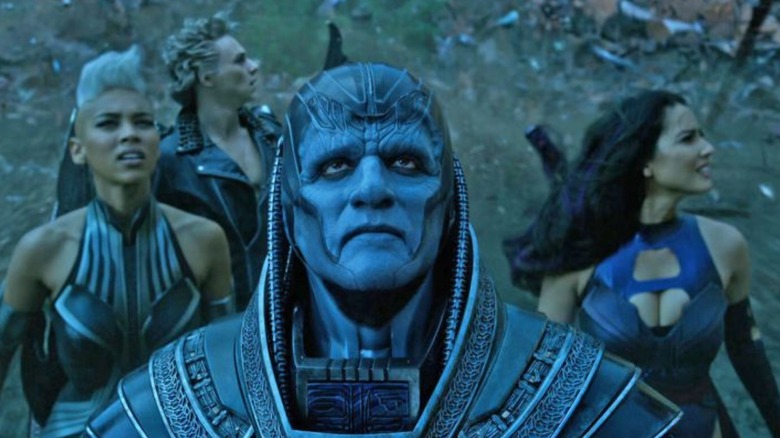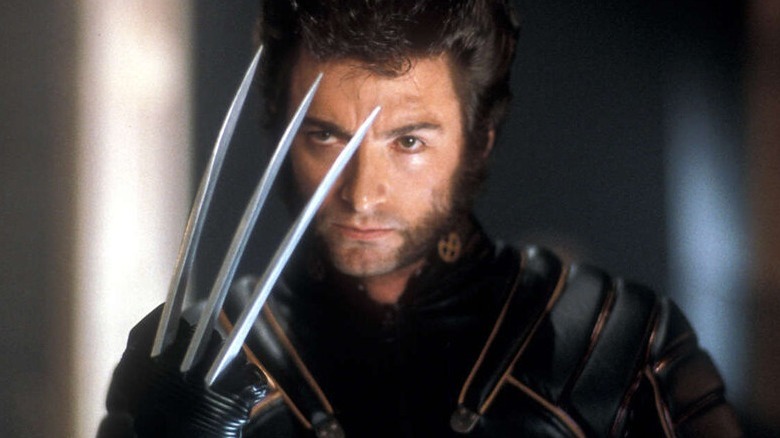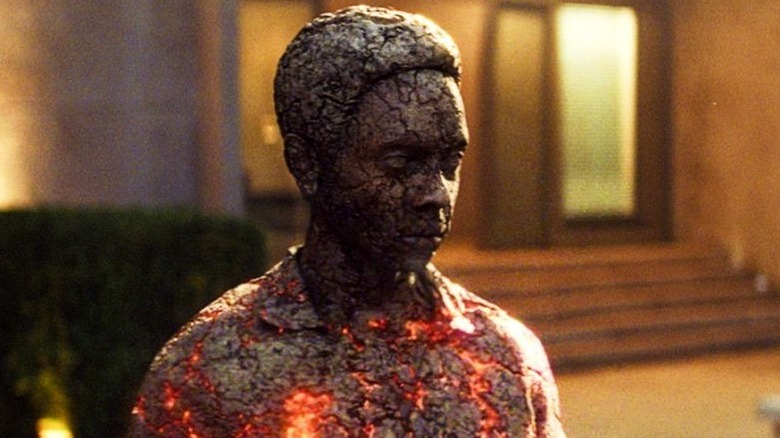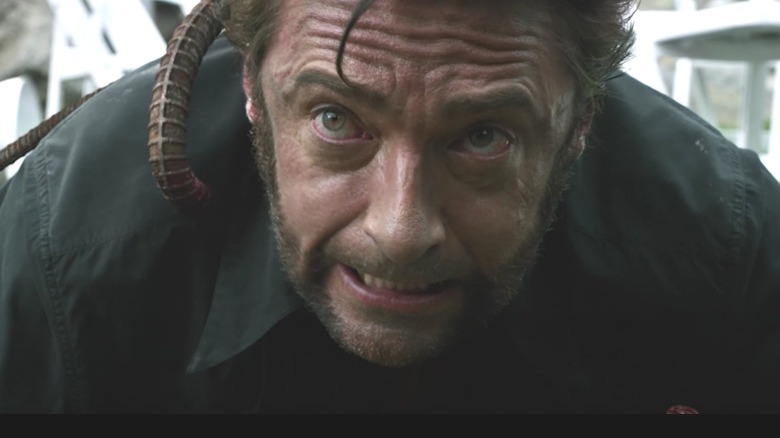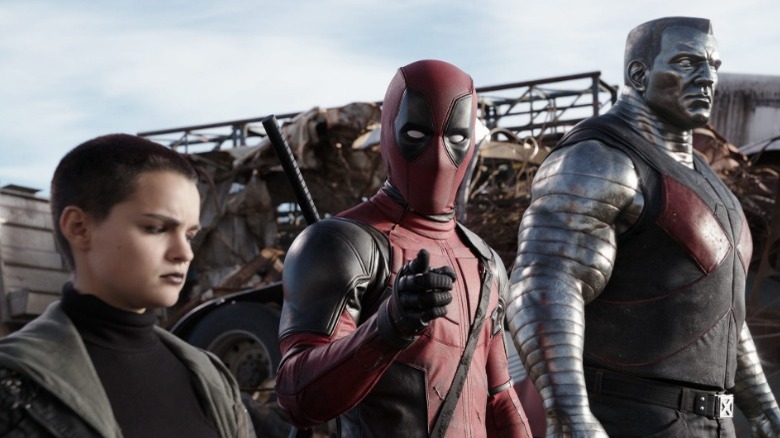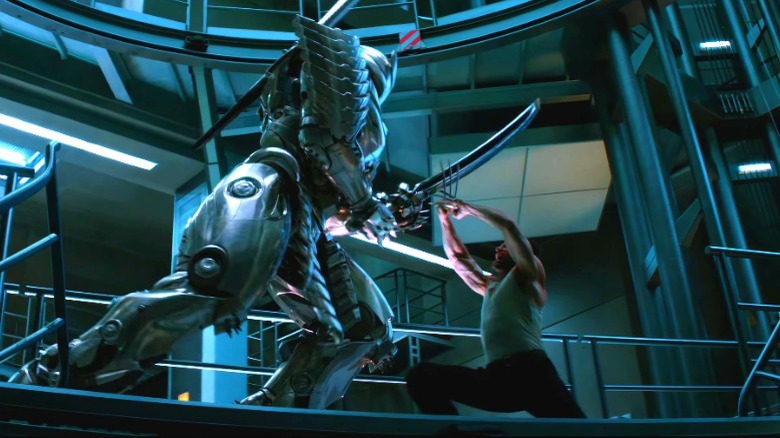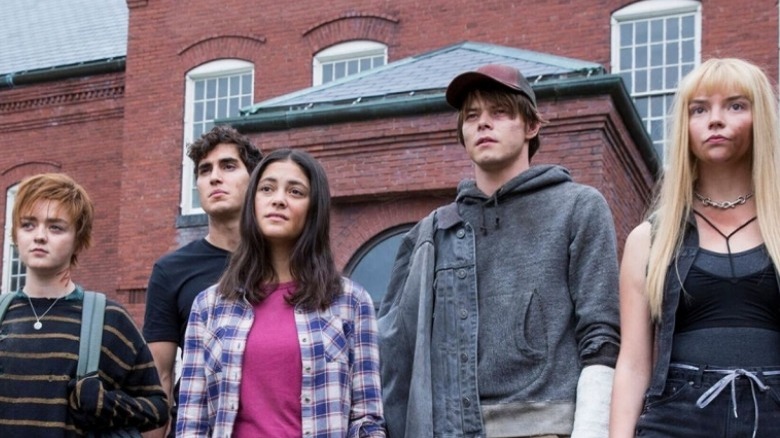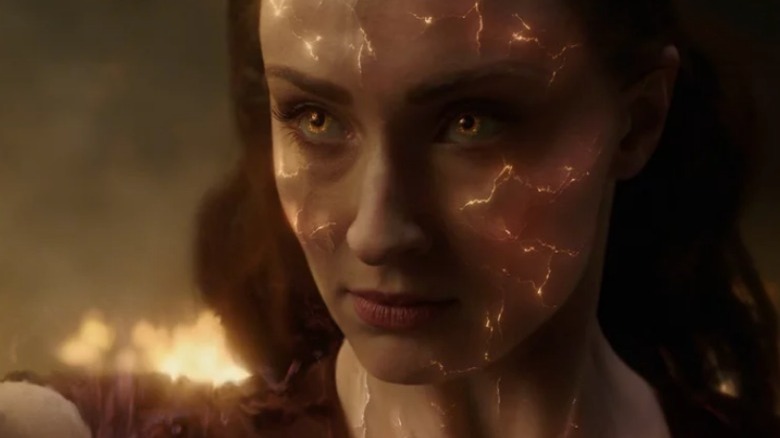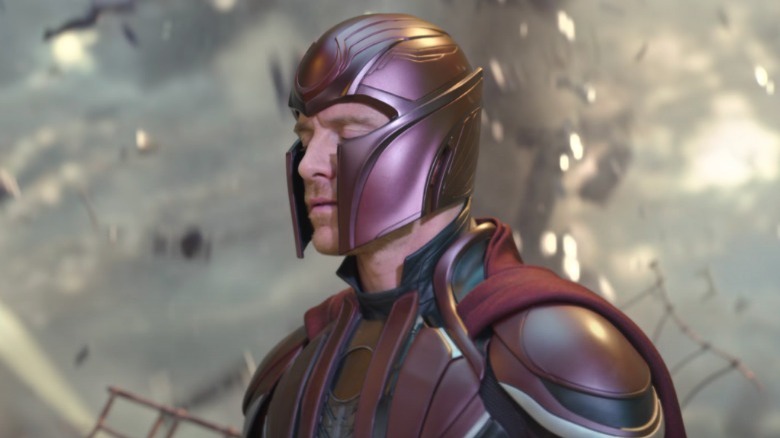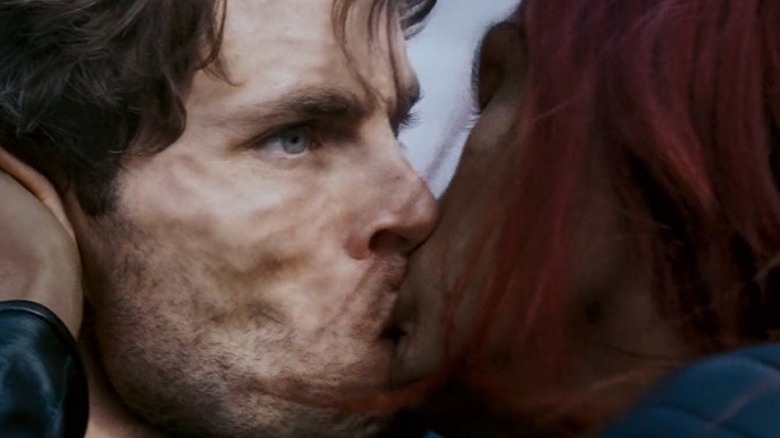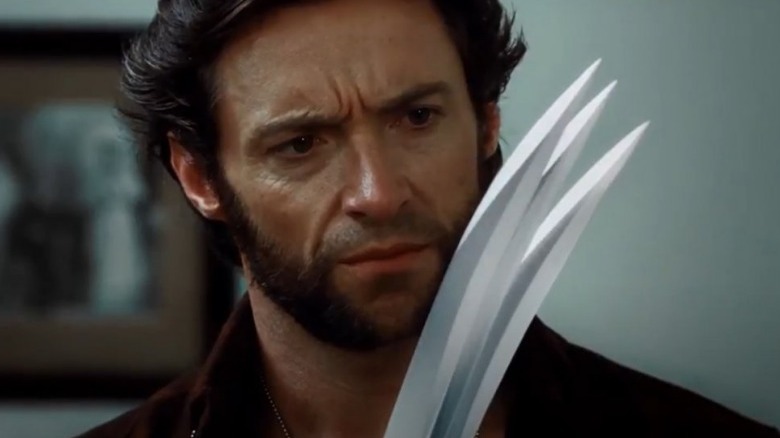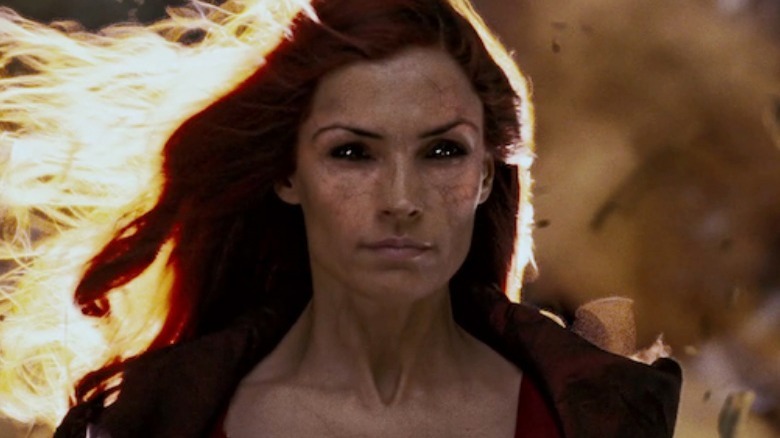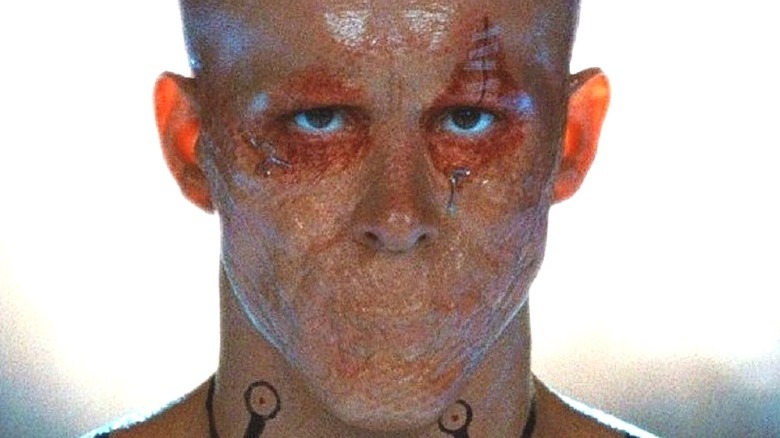X-Men Franchise Moments That Still Make Us Angry
"X-Men" is undeniably one of the best series to ever spring from the pages of a comic book. For decades, X-fans have pored over comics full of action and epic emotional arcs, a classic animated series, and a very hit-and-miss live-action film franchise. From highs like "Logan," "Days of Future Past," and "X2" to lows like "Dark Phoenix," "X-Men Origins: Wolverine," and "The Last Stand," the big screen appearances of Marvel's merry mutants have been wildly uneven, and there are plenty of specific moments in these films that still make us upset.
With the X-Men's impending entry into the Marvel Cinematic Universe, however, hope is on the horizon, and now that mutants have officially begun to sneak into the MCU, it feels like a good time to revisit some of the moments we hope future films don't repeat. Even the best films in the franchise aren't flawless. Some offenses are mild, while others made long-time comic book fans want to storm out of the theater. Join us as we get our claws out and slice away at some of the franchise's biggest missteps. Snikt!
X-Men — Non-comic accurate costumes
The first one is more of a nitpick than a cinematic sin. If you've seen "X-Men: The Animated Series" or read the comics, you know that the X-Men's costumes are as colorful and varied as their mutant abilities. As a result, fans were bummed to see the team make their big screen debut in matching leather flight suits. The producers expected as much. There's even an exchange in which Cyclops asks Wolverine, "What would you prefer? Yellow spandex?"
There was a reason for the more subdued look, though. As producer Ralph Winter explained to SYFY Wire, "We understand you'd rather have everybody in the traditional garb. But we also have to make a movie that reaches a wide audience to justify the budget." In hindsight, it might've been the right call. Despite the success of "Blade" a few years earlier, "X-Men" came out when comic book movies weren't taken seriously. By grounding the movie via more realistic costumes, the film also appealed to non-fans. Thanks to the success of "X-Men" and, later, Sam Raimi's "Spider-Man," we now have more comic book movies and TV shows than fans could've ever imagined — many of which feature comic-accurate outfits. Yes, it was disappointing at the time, but maybe it's time to let this gripe go.
X-Men: First Class — Killing off Darwin
"X-Men First Class" is an incredible reboot for the X-Men line. After the massive fumbles of "X-Men: The Last Stand" and "X-Men Origins: Wolverine," the series desperately needed a new direction. Enter director Matthew Vaughn. "First Class" moves the action to the '60s, and provides an origin for Professor X and Magneto's friendship and eventual fallout. Hiring Michael Fassbender as Magneto and James McAvoy as Professor X was perfect casting, and the addition of Sebastian Shaw, one of the X-Men's most powerful villains, provided a compelling new adversary. However, one nagging creative choice has haunted fans since the film debuted: the decision to kill off Darwin.
For the uninitiated, Darwin is a mutant who can evolve to live through anything. As such, it's a bit confusing when he's killed in his first onscreen appearance. Even actor Edi Gathegi thinks so, as he told ComicBook.com. "He adapts to survive. He cannot die," Gathegi said. "So yeah, I thought that was a huge miss, killing Darwin, and I think Darwin does deserve redemption."
We agree. Darwin deserved better. Fans kept hoping that he'd return in the final battle or a post-credits stinger, but multiple movies later, Darwin is still nowhere to be seen.
X-Men: Days of Future Past — Sidelining Wolverine
"X-Men Days of Future Past" is arguably the best team-up movie of the entire franchise. It crams both the prequel actors and the original "X-Men" cast into one movie, and yet never seems overcrowded. The story is lean, the stakes are enormous, and, visually, the juxtaposition between the '70s timeline and the post-apocalyptic future is incredible. The choice to send Wolverine back in time instead of Kitty Pryde, who starred in this storyline in the comics, makes sense because audiences love Hugh Jackman's Logan. Sidelining Wolverine for nearly the entire final battle, though? Not so much.
By this point, Wolverine's claws had been dulled by PG-13 ratings multiple times, and fans were eager to see Wolverine cut loose. Given the final battle involves an army of robots, not fleshy humans, it would have been the perfect opportunity to showcase Wolverine's animalistic nature. Instead, Magneto impales Logan with rebar and tosses him into a lake, robbing fans of the opportunity to see Wolverine go into a berserker rage. It's an odd and anti-climatic choice in an otherwise fantastic X-outing.
Deadpool — Where are all the X-Men?
"Deadpool" is a wild and irreverent movie that no one thought would get made. It doesn't just break the fourth wall; it completely obliterates it. It's funny, has heart, mocks the X-Men series' confusing timeline, and is shockingly bloody. It stands out from the other "X-Men" movies in nearly every way possible — including only featuring a couple of X-Men. Frankly, we wanted to see more.
In the film, Deadpool jokes, "It's funny that I only ever see two of you. It's almost like the studio couldn't afford another X-Man." It's true that the movie had a comparatively lower budget for an X-Men film, but there's a much simpler reason why more mutants didn't pop up. Screenwriter Paul Wernick broke it down at a screening of the film (reported by ComicBook.com): "We didn't want to populate his world with X-Men. They're two separate franchises, and I think had we done that, we would have been making a mistake. Even if we did have the budget."
"Deadpool" made enough money to warrant a sequel and proved that R-rated superhero films could be big business. So, even with a few missing mutants, this movie was ultimately a huge win for fans.
The Wolverine — CGI overkill
After the much-maligned "X-Men Origins: Wolverine," its sequel, "The Wolverine," is a step up, with a grittier and more grounded story. It also has significantly higher stakes, with Logan losing his powers. However, the moment that drove both fans and critics batty involves a fight with an overly computer-generated Silver Samurai that's so over-the-top that it feels like it belongs in a different movie.
"The Wolverine" has some fantastic set pieces, including the fight between Logan and Yakuza leader Shingen. Unfortunately, they make the shoddy CGI-driven climax stick out like a sore thumb. It feels like the result of some studio meddling — and, as it turns out, it is. As James Mangold told Den of Geek, "The studio was really concerned that we have big, CG action to stay afloat against the other films we were up against." Luckily, the movie hit enough high notes at the box office that James Mangold and Hugh Jackman were allowed to unleash Wolverine's full potential in their brilliant swan song, "Logan."
The New Mutants — Promised horror, delivered meh
"The New Mutants" was billed as the first mainstream superhero horror film. The trailer gave off intense "A Nightmare on Elm Street" vibes, and fans were accordingly excited to see a new twist on the superhero genre. In an interview with AMC Theatres, director Josh Boone said, "I really didn't want it to look like another comic book movie, but almost like a horror movie from the '90s." Then the PG-13 rating was announced, and fears that this would be a toothless horror film began to surface.
According to Forbes, the movie "went from promising YA/horror spin-off in Fox's still-strong 'X-Men' series to an unwanted, orphaned installment of an already dead franchise." Reshoots to make it scarier were planned and never transpired, resulting in a movie with an identity crisis. It wasn't scary enough for horror fans, and it wasn't exciting enough for superhero fans. Really, it felt more like a glossy pilot for a new Netflix series than a feature film.
Sadly, even if "The New Mutants" had been a success, the Disney train was already in motion. Outside of a few cameos, Fox's X-verse is becoming a fading memory, which is a shame because the "New Mutants" cast is fantastic. Only time will tell if the MCU will bring back these specific mutants, but fans of the "Demon Bear" comics would love a redo.
X-Men: Dark Phoenix — Again?
It's widely agreed that "X-Men: The Last Stand" handled the fan-favorite Dark Phoenix comic book arc rather poorly. So, when Fox announced "Dark Phoenix," a heavy dose of skepticism followed. However, writer-director Simon Kinberg reassured reporters at the "Deadpool 2" premiere (via ET), saying: "It's much more loyal to the original comic than 'X-Men 3.'" This goodwill didn't last long. Rumors of massive reshoots and story changes began to surface, followed by several delays. Upon release, fears of a lackluster rehash were confirmed. Once again, the Phoenix Saga failed to take flight.
However, there may be a "Marvel-ous" reason this Phoenix was doomed to crash and burn. James McAvoy told Yahoo Movies UK, "The finale had to change. There was a lot of overlap and parallels with another superhero movie that came out ... a while ago."
That movie may have been "Captain Marvel." Both films feature shape-shifting aliens, and the original ending of "Dark Phoenix" took place in outer space; this was changed to an Earth-based conclusion during the reshoots. Given that a "Kinberg Cut" seems unlikely, we're stuck with what was released, which feels like a loose remake of "X-Men: The Last Stand." The finale to a decades-long series ended with a whimper instead of a fiery bang.
X-Men: Apocalypse — No consequences for Magneto
On paper, "X-Men: Apocalypse" seemed destined to be a mutant showdown for the ages. With Oscar Isaac as the nigh-invincible mutant Apocalypse and the addition of Jean Grey, Scott Summers, Angel, Storm, Nightcrawler, and Psylocke to the X-Men roster, fans' hopes were sky high. However, the final film features an overstuffed and lazy narrative that focuses on spectacle at the expense of character. One of its most infuriating moments is Magneto aiding in the deaths of millions and then just ... walking away.
Magneto and Professor X have always been on opposite sides of the mutant-human debate. Still, the lack of accountability for Magneto at the end of this film is mind-boggling. After the final battle, where Magneto rips metal out of the Earth, destroying billions of dollars' worth of property and killing countless people, does he go to jail? No. Instead, he's offered a teaching position at Xavier's School for Gifted Youngsters, which he politely refuses. To be clear, Apocalypse didn't possess Magneto. He committed these atrocities on his own volition and suffered no repercussions. Fans love Magneto, but there's a limit to what they can forgive.
X-Men: The Last Stand — Killing Cyclops
"X-Men: The Last Stand" has several moments that infuriate fans, but one of the most frustrating happens in the first scene: Jean Grey reappears from the dead and inexplicably sucks the life out of Cyclops, killing him off-screen. It makes little narrative sense and robs the movie of the previously set-up love triangle between Jean, Scott, and Logan. In addition, unceremoniously offing Cyclops was incredibly upsetting to comic book fans, as he is one of the founding members of the X-Men and an integral part of the Dark Phoenix storyline. So, why do it?
The creatives must have had a compelling reason for making this decision, right? Not really. Scott's abrupt end was the result of James Marsden signing on to director Bryan Singer's "Superman Returns," leading to schedule conflicts that forced Fox to kill Cyclops off. It's an ill-informed creative choice that feels more like a snub, and pushes the movie in the wrong direction from the get-go. It never really recovers.
X-Men Origins: Wolverine — Cartoon Claws
"X-Men Origins: Wolverine" already has enough story problems to send fans into a berserker rage, but it also features laughable visual effects. A particularly goofy moment occurs when Logan admires his new adamantium claws, which look like they've been rendered via hand-drawn animation. In previous films, Wolvie's signature weapons looked like genuine death-dealing blades. Here, they feel weightless, more like something from "Who Framed Roger Rabbit?" than the X-Men's grittiest hero's origin story.
In previous entries, Wolverine's claws were realized via a mix of practical and computer effects. In "X-Men Origins: Wolverine," they're almost exclusively CGI. This decision was made partially for safety, as Hugh Jackman told Vulture. "I can't tell you how many people I stabbed, how I stabbed myself. They were killing machines," he said. While we always advocate for a safe working environment, using solely computer-generated claws proved distractingly bad. We're not alone in thinking so, either. CHUD.com counts a use of Wolverine's CGI claws as one of "the 20 worst instances of CGI in movie history."
X-Men: The Last Stand — Dark Phoenix disaster
As previously mentioned, "The Dark Phoenix Saga" is a beloved story in the comics, and is considered one of the high points of the entire X-Men canon. As such, given how "X2" ends, one would assume that Jean's tragic descent as the Phoenix would be the central plot of "X-Men: The Last Stand," too. Unfortunately, the studio thought the story was too dark. According to PopMatters, Fox insisted on balancing out Jean Grey's heel turn with a separate story involving a mutant "cure." Either one of these plots would be more than enough for their own movie, and by cramming them both into one film neither one received the development it deserved.
Jean begins the movie on an irredeemable note, killing Cyclops, and then plays back-up-baddie to Magneto for the rest of the film. She spends most of her screentime standing in the woods until an all-out mutant beatdown unfolds on the Golden Gate Bridge. However cool the final action set piece may look, the focus isn't on stopping Jean as the Dark Phoenix. It's about stopping the mutant cure. Really, "X-Men: The Last Stand" is barely a "Dark Phoenix" adaptation at all. The script ignores the operatic space adventures from the comics in favor of a half-realized Cliff's Notes version of the source material. As you can imagine, fans were pretty upset.
X-Men Origins: Wolverine — The Merc with No Mouth
It's easy to forget now, but the big screen debut of Ryan Reynolds as Deadpool did not deliver. Yes, in the opening scene of "X-Men Origins: Wolverine," Reynolds is as great as you'd expect as Wade Wilson, cracking jokes and cutting bullets in half with his swords, but then he disappears for the majority of the film. When he finally returns for the climactic battle, he has no mouth and a potpourri of mutant powers, including eye blasts and the ability to unsheathe giant swords from his knuckles. It's even sillier than it sounds.
As we all know now, casting Ryan Reynolds as Deadpool is a perfect decision. So, why would anyone look at a character known as "The Merc with a Mouth" and literally take his mouth away? This woefully misguided creative choice is the most infuriating moment in the entire X-Men series. Even Ryan Reynolds thought it was a bad idea. As he told Entertainment Weekly, "I was already attached to the Deadpool movie ... It was sort of like, 'Play Deadpool in this movie, or else we'll get someone else to.' And I just said, 'I'll do it, but it's the wrong version.'" Thankfully, fans and Reynolds got the last laugh. At the end of "Deadpool 2," Wade time travels to clean up the X-Men film continuity and kills off this mouthless monstrosity. Classic Deadpool.
